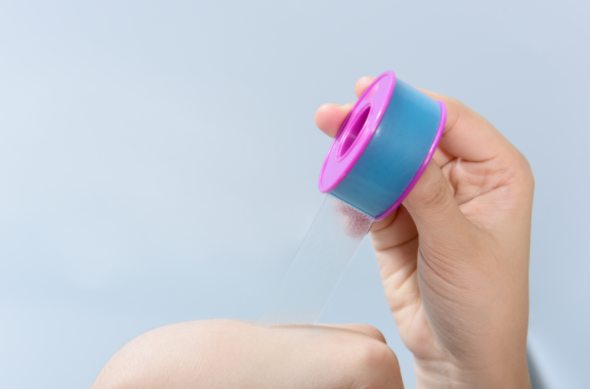The strong stickiness of traditional adhesive tape may cause epidermal peeling, while the need for low allergenicity is often ignored. This contradiction is particularly prominent in infusion scenarios that require repeated punctures. When the tape is torn off, it leaves red marks or even blisters. For people with delicate skin, such as children and the elderly, what safe fixing dressing is more suitable?

What are the characteristics of children's and the elderly's skin?
The epidermis of infants and young children is only 60% thicker than that of adults, and the collagen fibers in the dermis are sparse. The skin of the elderly is dry and elastic due to atrophy of the sebaceous glands. When the adhesive force of the tape exceeds the skin's tolerance threshold, tension damage may occur. Clinical observations have found that the incidence of skin tears in children using ordinary zinc oxide tape is as high as 12.7%, and the duration of erythema at the venous puncture site in the elderly is 40% longer than that in adults. These data reveal the special needs of special populations for tape materials.
Why is silicone gel tape the best choice?
As a new type of medical adhesive, silicone gel tape is fixed by physical adsorption rather than chemical bonding. Its core advantage lies in the three-layer structure design: the contact layer is made of low-sensitivity silicone, the middle is an elastic fiber mesh, and the outer layer is a breathable polyurethane film. This structure not only ensures a holding force of 14N/25mm but also reduces the vertical tear force to 0.3N/cm², which is equivalent to 1/3 of traditional tape. More importantly, silicone gel does not contain acrylic adhesives, and the sensitization rate is less than 0.05%, which is particularly friendly to children with eczema.
What details should be paid attention to when using it?
Before fixation, use a 75% alcohol cotton pad to wipe the skin in a spiral from the inside to the outside with the puncture point as the center, and then stick it after it is completely dry. Cut the tape into an "I" shape, with the central hole slightly larger than the diameter of the puncture point, which can fix the needle handle without blocking the puncture site. For hyperactive children, the "human" reinforcement method can be used: on the basis of conventional tape, two 5cm long tapes are cross-pasted along the direction of the vein to form a mechanical triangle. When tearing it off, use the 180-degree translation method, press the skin, and slowly lift it up to avoid violent tearing.
How to apply flexibly in special scenarios?
If you encounter a patient with edema, you need to evaluate the edge of the tape daily to see if there is an indentation. If the finger pressure is depressed for more than 2 seconds, you should immediately replace it with a larger tape to disperse the pressure. It is worth noting that although the silicone gel tape can be left in place for 72 hours, the replacement cycle should be shortened if the puncture site is red and swollen.

How to ensure standardization in home care scenarios?
For home care, it is recommended to prepare a special care package containing silicone gel tape, skin cleansing wipes, and a marker. Clean the skin with a wipe before each infusion, stick the tape along the vein after it dries, and mark the puncture time with a marker. When removing it, first soak the edge of the tape with baby oil, wait for 1 minute, and then slowly peel it off. For elderly people with cognitive impairment, you can choose ta ape with color markings to help caregivers quickly locate the puncture site. Be especially vigilant that repeated use of tape will cause sticky substances to remain, increasing the risk of allergies.
Infusion fixation is the epitome of medical care, and the choice of tape reflects a deep understanding of skin physiology.
For more information on Innomed®Medical Silicone Tape, refer to the Previous Articles. If you have customized needs, you are welcome to contact us; You Wholeheartedly. At longterm medical, we transform this data by Innovating and Developing Products that Make Life easier for those who need loving care.
Editor: kiki Jia

 English
English عربى
عربى Español
Español русский
русский 中文简体
中文简体








